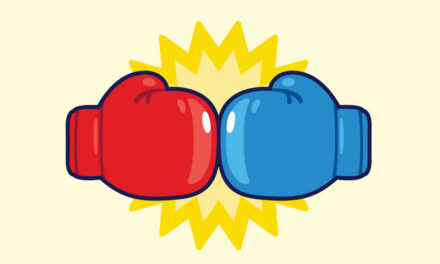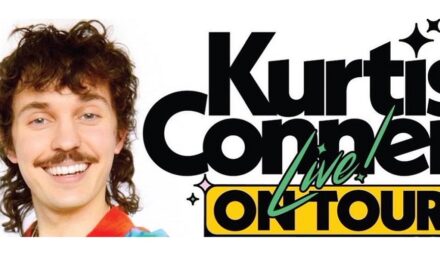The cartoonish graphic is clean, colorful and simple: A young girl curls up on a park bench to scan the top headlines on her tablet while an assumedly older, bespectacled man sitting next to her is riveted to the local print newspaper he holds up to his face. Anchored below the art is a commanding headline that is terse, direct, and assured: “Smart is the new sexy,” it asserts. And as a closing statement, the motto “The newspaper-get it” floats in the bottom right corner.
Challenging times for the newspaper industry call for fresh, inventive promotional appeals to current and prospective customers. Or so believes the Newspaper Association of America (NAA), sponsors of the “Smart is the new sexy” campaign, launched in late October and concluding in early December. The campaign consists of three different ads-available in broadsheet or tabloid print and digital banner executions-that combine eye-catching illustrations with interesting anecdotes to underscore the value of newspaper media and the editorial, advertising, and community attributes they provide.
Donna Barrett, CEO of Community Newspaper Holdings, Inc., an NAA board member, and chair of the NAA committee that helped develop the campaign, said the aim of the ads was to push the inherent strengths of newspapers using a fun, cheeky look and message.
“We have been somewhat dry and serious in our message in the past. We’ve taken a different approach, which I believe will really resonate and generate conversation,” says Barrett, who declined to provide details on the dollars behind the campaign but noted that there was a modest budget for creative provided by The Martin Agency, based in Richmond, Va.
“The goal is essentially to celebrate the timeless and important attributes of newspapers that speak to consumers across all forms,” says Cheryl Sadowski, VP of communications for the NAA. “This includes those who use our print products and digital products, existing subscribers as well as non-subscribers, as well as folks who come to newspapers through other channels, such as digital, who might be persuaded to become subscribers. There’s a tremendous amount of transformation going on in the industry, but we’re trying to say that the mission of newspapers hasn’t changed, nor has their critical role in society.”
Ken Doctor, a news industry analyst and author of Newsonomics: Twelve New Trends That Will Shape the News You Get (St. Martin’s Press, 2010), sys he admired the look and design of the campaign ads. “The images are very modern and bright, and basically say ‘digital,’ ‘mobile.’ They’re trying to reposition the newspaper as a more contemporary delivery device,” he says. “[Each ad] makes a quick impression. It’s not going to sell papers by itself, but it’s trying to move that needle of how people think about [newspapers].”
However, Doctor was skeptical that the “Smart is the new sexy” message will resonate with enough people. “It’s very hard to measure this kind of campaign, which is trying to reassert the value of newspapers in the digital age,” Doctor says. “I think that increasingly selling themselves as newspapers unfortunately reinforces the old association of old news on paper. This is about news, it’s not about paper. Instead of sticking with the newspaper branding, I would move more toward a news branding.”
Media analyst Wendell Potter, author of Deadly Spin: An Insurance Company Insider Speaks Out on How PR is Killing Health Care and Deceiving Americans (Bloomsbury USA, 2010), says he liked the campaign’s presentation, but is doubtful that it can make a significant impact over its short run.
“A six-week advertising campaign is not going to be effective in really changing behaviors for the long haul,” says Potter. “It may serve as a brief reminder as to the value of newspapers. However, unless they add a well-thought out strategic communications plan that includes other elements beyond this advertising campaign, it will not succeed.”
Doctor added that he would improve the campaign by depicting newspaper readers as multitaskers who use many platforms, including smart phones and tablets. “I would get past the old paradigm of older people read print and younger people read digital,” he says.
Sadowski insisted that the campaign attempts to reach people of all ages who read newspapers, including digital news consumers who engage in social media. To tap into this segment of the market, the ads employ QR codes and digital prompts that link consumers to a campaign web page. There, they can read more about the “smart/sexy” newspaper connection and share their own experiences with newspapers by tweeting the #smartsexy hashtag, or posting comments or video to NAA’s Facebook page. In addition, the NAA is encouraging member newspapers to use social media to promote the campaign in their own markets.
“The Quad City Times is a great example of this,” says Sadowski. “The newspaper asks readers to post why being a Quad City Times reader makes them smart and sexy and is offering a gift card incentive for the best answers. In addition, they are leveraging the campaign on Facebook and Twitter and have distributed the link via social media.”
While the newspaper industry continues to face obstacles-including reduced staff and difficulty recruiting and retaining advertisers-Barrett says she and the NAA are encouraged by the latest data. Recent findings from comScore indicate a 20% year-over-year increase in total visits to newspaper websites in the most recent survey period and double-digit growth in other audience engagement categories. Additionally, comScore reports that newspaper publishers attracted an average monthly audience of 110 million unique visitors ages to their websites in the second quarter of 2011-nearly two-thirds of all adult internet users. That quarterly average represents a 2% increase over the first quarter average, and marks the third consecutive quarter of growth in newspapers’ online audience.
“People are consuming news more than they ever have before and over more platforms,” says Sadowski. “It’s clear to us that Americans are finding it important in general to be smart and stay smart. We’re echoing what people believe and attaching that to our brand.”






